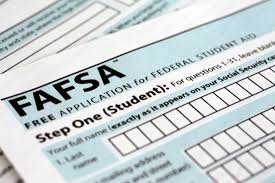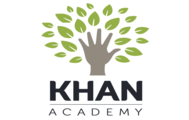Save for College
Ohio parents who open a CollegeAdvantage 529 account, Ohio‘s college savings plan, enjoy the benefit of federal and state tax-free growth on the money they save as well as up to a $4,000 State of Ohio tax deduction for each beneficiary.

Check out the U.S. Department of Education's College Preparation Checklist brochure for a comprehensive guide on college planning from elementary to high school.
And check out CollegeBoard's College Planning Calendar for high school seniors.
Visit the sites below for information and tools for determining career paths:
Explore Careers

Visit the Ohio Higher Ed website provided by the Ohio Board of Regents. It provides a number of valuable tools to students and parents to assist with finding a career.

The Department of Labor also has a career search tool that will help you explore possible careers. You can search careers with key words, browse careers by industry, or answer questions about the type of work you might enjoy (based on your answers, the tool will suggest careers that match your interests and training).
Choose a School
Ohio’s comprehensive public system of higher education institutions is comprised of 14 universities with 24 regional campuses and 23 two-year colleges. The 61 institutions in the system ensure that every Ohio citizen is within 30 miles of an institution.
Visit Ohio Department of Higher Education for more information about Ohio institutions.
Also use the U.S. Department of Education‘s college search tool, College Scorecard, to find colleges and career schools.
Understand College Costs
Attending college requires multiple costs, including: tuition, room and board; books and school supplies; fees (parking); and other miscellaneous living expenses.
Use the Ohio Attorney General's Budget Calculator to help plan for total college expenses.
Apply to Schools
- Seek out assistance from your high school guidance counselor early in the process.
- Research and follow application requirements carefully.
- Consider applying early and also online to save costs.
- Determine whether the common application can be utilized to fill out one application for multiple schools.
Types of Financial Aid
Financial Aid comes in three forms: gift aid, loans, and employment.
- Gift Aid (Grants and Scholarships) is a form of financial aid that does not need to be paid back. There are many scholarships and grants available to help many types of students, no matter their family income or interests.
- Use the resources provided at Ohio Higher Ed to search for scholarships and grants.
- Each higher education institution in Ohio also provides its own grants and scholarships. Contact an institution‘s financial aid office to determine what aid is available.
- Federal grants and scholarships - The federal government provides grant funds for students attending colleges, career schools, and universities. For example:
- Federal Pell Grant - Generally awarded to undergraduate students based on financial need.
- Federal Supplemental Educational Opportunity Grant (FSEOG) - Awarded to undergraduate students who have exceptional financial need and who have not earned a bachelor‘s or graduate degree.
- Teacher Education Assistance for College and Higher Education (TEACH) Grant - For undergraduate, post-baccalaureate, or graduate students who are or will be taking coursework necessary to become elementary or secondary teachers.
- Iraq and Afghanistan Service Grant - For students whose parent or guardian was a member of the U.S. armed forces and died as a result of performing military service in Iraq or Afghanistan after the events of 9/11.
- Loans are money that is borrowed and then paid back over time. It is important to research and read the terms of a loan to determine when repayment begins. The federal government provides several student loan options:
- Direct Subsidized Loan - This loan is available to eligible undergraduate students to help cover the costs of higher educations at a college or career school. To qualify, the student must demonstrate a financial need.
- Direct Unsubsidized Loan – This loan is available for eligible undergraduate, graduate, or professional students. There is no financial need requirement.
- Direct PLUS Loan – This loan is available to eligible graduate students, professional students, and parents. This loan helps cover education expenses not covered by other financial aid.
- Direct Consolidation Loan – This is a program that allows a borrower, after he or she leaves school, to consolidate all eligible federal student loans into one loan with one loan servicer.
- Other student loan options are:
- Perkins Loan – This is a school-based loan available to eligible students who demonstrate financial need. The school serves as the lender.
- Private Loan – This loan is offered by private lenders, such as banks. Private loans are almost always more expensive and may have fewer repayment options than federal student loans.
- Employment - The Federal Work-Study Program provides part-time jobs for undergraduate and graduate students with financial need, allowing them to earn money to help pay education expenses

Apply for Financial Aid
The Free Application for Federal Student Aid ("FAFSA" ) is the key to student aid, especially federal financial student aid programs. In addition, many colleges and universities use the information from the FAFSA to determine eligibility for grants.
 Read "Filling Out the FAFSA" from the U.S. Department of Education, which tells you what is needed to fill out the FAFSA, how to fill it out, and who to contact for help. In addition, the Ohio Association of Student Financial Aid Administrators Resources for Students & Parents provides detailed instructions and videos to assist you in completing the FAFSA.
Read "Filling Out the FAFSA" from the U.S. Department of Education, which tells you what is needed to fill out the FAFSA, how to fill it out, and who to contact for help. In addition, the Ohio Association of Student Financial Aid Administrators Resources for Students & Parents provides detailed instructions and videos to assist you in completing the FAFSA.
Note: The FAFSA is available on October 1 every year. It's generally best to submit the FAFSA as early as possible. For more information on FAFSA changes, contact your guidance counselor or visit the U.S. Department of Education's website.

Federal financial student aid is one way to finance your education. There are many other ways to make college affordable for you and your family. Explore some of your options by visiting Khan Academy’s Paying for College webpage for videos featuring administrators from the nation’s leading institutions. Learn from the professionals about your options for making college affordable.